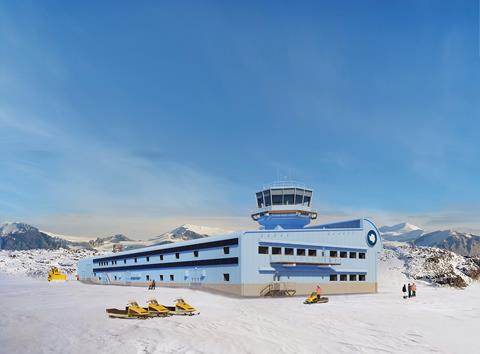- Home
- Intelligence for Architects
- Subscribe
- Jobs
- Events

2025 events calendar Explore now 
Keep up to date
Find out more
- Programmes
- CPD
- More from navigation items
Antarctica: Designing for the planet’s most hostile continent

A £100m Antarctic infrastructure programme presents some unique design challenges – like deflecting snow and elephant seals. Elizabeth Hopkirk hears about the hardships and rewards of building at the bottom of the world

”People are quite surprised when I say this, but a Scottish winter is probably worse than working in Antarctica,” says Bam Nuttall’s Graham Hopper. The civil engineer, speaking via Zoom from his native Inverness, knows a thing or two about remote locations and hostile conditions – as does his employer. His previous projects have included tunnelling through mountains on rain-lashed Scottish islands to build hydroelectric schemes.
By contrast, the weather in an Antarctic summer – roughly November to April, the only time when construction is possible – can be positively pleasant, he says. It is relatively dry, often sunny and sometimes the temperature even edges above 0ºC. The scenery is also spectacular and the snowboarding passable. You just need to watch out for elephant seals on your way to the office.
You would have been forgiven for assuming that the biggest challenge facing a contractor and design team at the bottom of the world was the inhospitable climate. The ground, even when not covered by hundreds of metres of snow and ice, is underlain by permafrost harder than concrete, the temperature is routinely below the point at which cheap steel shatters and it is not unusual for the wind to be a bracing 70mph. But, says Hopper, building in difficult conditions is just “what we do”.
…
This is premium content.
Only logged in subscribers have access to it.
Login or SUBSCRIBE to view this story

Existing subscriber? LOGIN
A subscription to Building Design will provide:
- Unlimited architecture news from around the UK
- Reviews of the latest buildings from all corners of the world
- Full access to all our online archives
- PLUS you will receive a digital copy of WA100 worth over £45.
Subscribe now for unlimited access.
Alternatively REGISTER for free access on selected stories and sign up for email alerts






